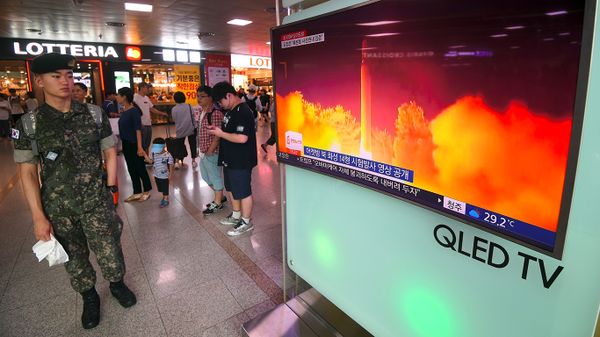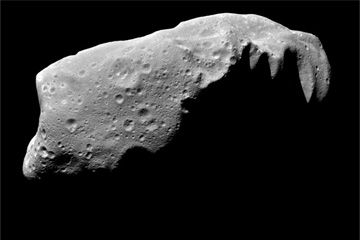
During the 2016 presidential campaign, MSNBC host Joe Scarborough caused a stir by saying that then-candidate Donald Trump repeatedly had asked a foreign policy adviser why the U.S. couldn't use the nuclear weapons in its arsenal. A Trump spokesman later denied that Trump had posed this question.
Nevertheless, since Trump became president in 2017, his administration has moved not only to expand the U.S. nuclear arsenal, but to add more "low-yield options" — smaller-scale nuclear weapons that a president could resort to using in something short of an all-out nuclear war.
Advertisement
In the 2018 Nuclear Posture Review, a document issued earlier this year, the Trump administration says it would increase the existing U.S. low-yield capability — which now consists of about 500 gravity bombs that could be dropped by U.S. aircraft, including about 200 positioned in western Europe — by modifying existing submarine-launched ballistic missiles to carry low-yield warheads. It also would develop a new class of cruise missiles to deliver low-yield nukes.
The Trump administration insists that it's not actually looking to use low-yield nukes. "To be clear, this is not intended to, nor does it enable, 'nuclear war-fighting,'" the National Posture Review notes. "Expanding flexible U.S. nuclear options now to include low-yield options is important for the preservation of credible deterrence against regional aggression. It will raise the nuclear threshold and help ensure that potential adversaries perceive no possible advantage in limited nuclear escalation, making nuclear employment less likely."
Though Trump, at his recent summit with Russian President Vladimir Putin in Helsinki, expressed a desire for a friendlier relationship with Russia, the National Posture Review portrays Russia, which is modernizing its stock of 2,000 low-yield nuclear weapons, as its expected adversary in such a limited nuclear confrontation. "Russia's belief that limited nuclear first use, potentially including low-yield weapons, can provide such an advantage is based, in part, on Moscow's perception that its greater number and variety of non-strategic nuclear systems provide a coercive advantage in crises and at lower levels of conflict," the report says. "Recent Russian statements on this evolving nuclear weapons doctrine appear to lower the threshold for Moscow's first-use of nuclear weapons."
Advertisement

